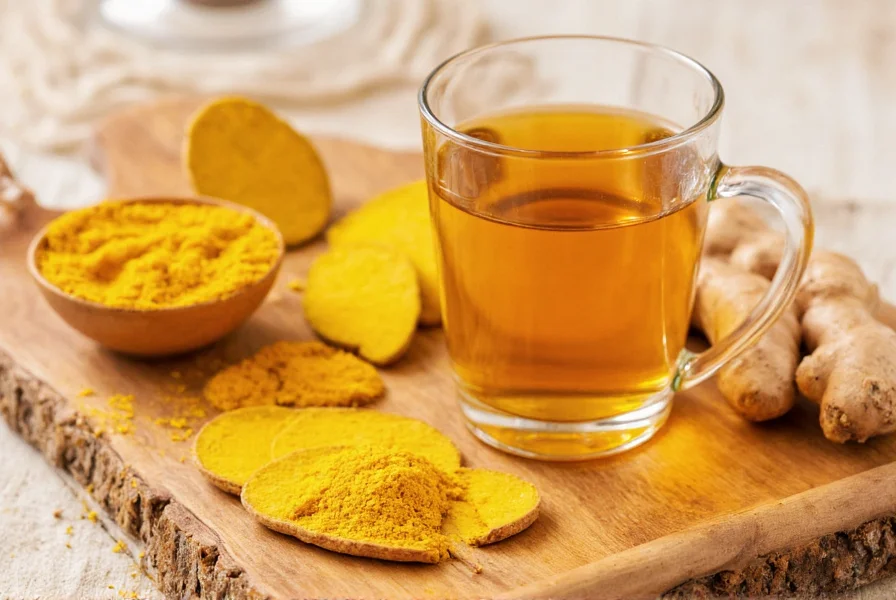For centuries, traditional medicine systems have utilized ginger and turmeric for their therapeutic properties. Modern research continues to explore the science behind ginger root turmeric tea benefits, revealing promising but nuanced findings about this popular herbal infusion. Unlike many trendy wellness products, this tea blend has substantial historical use and growing scientific interest supporting its potential health applications.
The Science Behind Ginger and Turmeric
Ginger (Zingiber officinale) contains gingerols, while turmeric (Curcuma longa) features curcumin as its primary active compound. These bioactive components work through different mechanisms in the body. Research published in the Journal of Medicinal Food indicates that anti-inflammatory properties of ginger turmeric tea may help reduce markers of inflammation, though effects vary based on preparation method and individual physiology.
A 2021 systematic review in Nutrients examined 24 clinical trials involving ginger and turmeric supplementation. The analysis found moderate evidence supporting their role in managing osteoarthritis symptoms and improving digestive function, but noted that health benefits of homemade ginger turmeric tea may be less concentrated than standardized extracts used in studies.
How to Prepare Effective Ginger Turmeric Tea
Creating an effective infusion requires attention to preparation details. The following method maximizes bioactive compound extraction:
| Ingredient | Amount | Preparation Tip |
|---|---|---|
| Fresh ginger root | 1-inch piece | Thinly sliced or grated for maximum surface area |
| Fresh turmeric root | 1/2-inch piece | Peel before use to remove bitter outer layer |
| Water | 2 cups | Bring to boil, then simmer for 10-15 minutes |
| Black pepper | 1/8 teaspoon | Enhances curcumin absorption by up to 2000% |
| Healthy fat | 1 teaspoon coconut oil | Improves absorption of fat-soluble compounds |
This preparation method creates what many consider the best ginger turmeric tea recipe for inflammation. The addition of black pepper and healthy fat significantly increases the bioavailability of curcumin, which has poor absorption when consumed alone.

Evidence-Based Health Benefits
While not a miracle cure, research suggests several potential benefits of regular consumption:
Digestive Support
Ginger has demonstrated effectiveness in managing nausea and improving gastric motility. A 2020 review in Marine Drugs found ginger compounds accelerated gastric emptying by 25% compared to placebo. Many users report ginger turmeric tea for digestion helps alleviate occasional indigestion and bloating.
Inflammation Management
The combination may help modulate inflammatory pathways. Research in Phytotherapy Research showed that regular consumption of ginger and turmeric together produced greater anti-inflammatory effects than either alone in animal models. However, human studies on does ginger turmeric tea reduce inflammation show more modest results.
Immune System Modulation
Both botanicals demonstrate immunomodulatory effects rather than direct immune boosting. A 2019 study in Frontiers in Immunology noted these compounds help regulate immune response, potentially beneficial during seasonal challenges.
Potential Side Effects and Precautions
While generally safe, certain individuals should exercise caution:
- Blood thinning concerns: Both ginger and turmeric have mild anticoagulant properties. Those taking blood thinners should consult their healthcare provider before regular consumption of ginger root turmeric tea side effects could potentially interact with medications.
- Digestive sensitivity: High concentrations may cause heartburn or stomach upset in sensitive individuals. Starting with weaker brews of how to make ginger turmeric tea for beginners is recommended.
- Gallbladder issues: Turmeric may stimulate bile production, potentially problematic for those with gallstones.
Maximizing Benefits Through Proper Consumption
For optimal results when preparing ginger turmeric tea with lemon and honey:
- Use fresh roots rather than powdered forms for higher potency
- Simmer rather than steep to extract more active compounds
- Add black pepper to increase curcumin absorption
- Include a small amount of healthy fat for better bioavailability
- Consume regularly rather than occasionally for cumulative effects
Timing matters too. Many practitioners recommend when to drink ginger turmeric tea for weight loss is 20-30 minutes before meals to potentially support digestion and satiety. However, scientific evidence specifically linking this tea to weight loss remains limited.
Realistic Expectations for Ginger Turmeric Tea
It's crucial to maintain realistic expectations about what does ginger turmeric tea do for your body. While beneficial as part of a healthy lifestyle, it's not a substitute for medical treatment. The most significant benefits appear to come from consistent, moderate consumption rather than occasional use.
Quality matters significantly. Studies show that fresh ginger vs dried ginger in tea contains higher concentrations of active compounds. Similarly, turmeric root generally provides more bioavailable curcumin than powdered forms when properly prepared.











 浙公网安备
33010002000092号
浙公网安备
33010002000092号 浙B2-20120091-4
浙B2-20120091-4